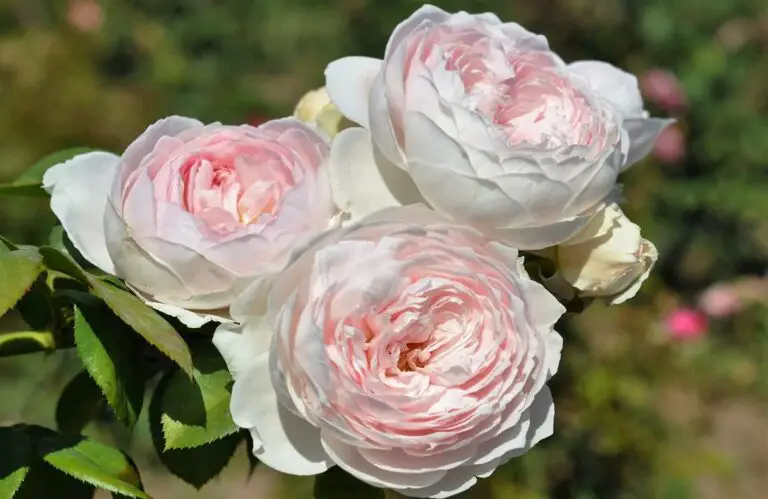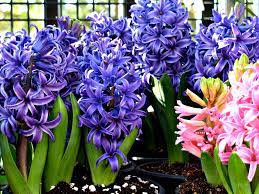Introduction
Peonies are the stars of many gardens, and among them, the Felix Crousse Peony stands out for its beauty and charm. Imagine stepping into your garden and being greeted by large, vibrant blooms with a delightful fragrance. That’s the magic of the Felix Crousse Peony. This stunning flower isn’t just pretty to look at; it’s also a symbol of elegance and grace.

Whether you’re a seasoned gardener or just starting out, you’ll find that the Felix Crousse Peony is a wonderful addition to your garden. This peony variety is known for its lush, double blooms that come in a rich, deep pink color. These flowers can brighten up any garden and are perfect for creating beautiful bouquets.
But what makes the Felix Crousse Peony so special? It’s not just its looks. This peony is also quite easy to grow and care for, making it a favorite among gardeners. With a little bit of attention and the right conditions, these peonies can thrive and bring joy to your garden year after year.
In this guide, we’ll take you through everything you need to know about the Felix Crousse Peony. From planting and growing to caring for these beautiful flowers, we’ve got you covered. You’ll learn how to get the most out of your peony plants, ensuring that they remain healthy and vibrant.
So, whether you’re looking to add a touch of elegance to your garden or simply want to enjoy the beauty of these flowers, the Felix Crousse Peony is an excellent choice. Get ready to discover the joys of growing and caring for one of the most beloved peony varieties around. Your garden will thank you!
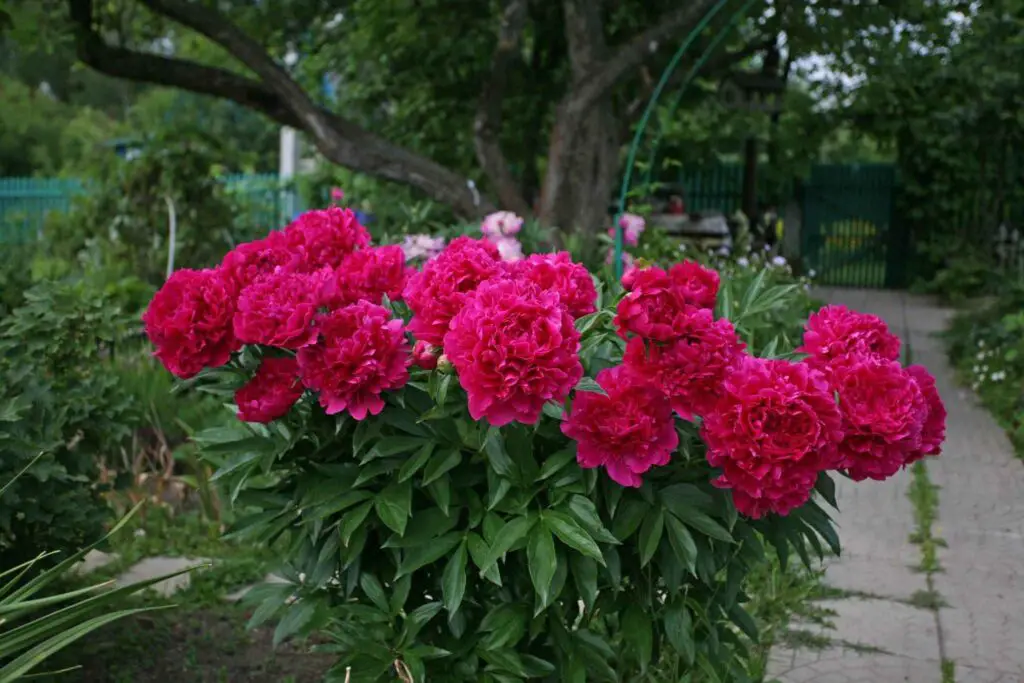
Overview of Felix Crousse Peony
Felix Crousse Peony flowers are a gardener’s delight, known for their striking beauty and classic charm. These peonies are named after the famous French horticulturist, Felix Crousse, who developed many wonderful peony varieties in the late 19th century. Let’s dive into what makes the Felix Crousse Peony so special.
Description and Characteristics
When you see a Felix Crousse Peony in full bloom, it’s hard not to be impressed. These flowers boast large, double blooms that are rich, deep pink. The petals are soft and layered, creating a full, lush look that stands out in any garden. Each bloom can reach up to 6 inches in diameter, making them quite the showstopper.
The Felix Crousse Peony isn’t just about looks. It also has a delightful fragrance that fills the air, especially in the early morning and late afternoon. This sweet scent adds an extra layer of enjoyment to your garden, making it a peaceful retreat.
Historical Background and Origin
The Felix Crousse Peony has a rich history. Felix Crousse, the man behind this beautiful flower, was a renowned horticulturist from France. He dedicated his life to developing and perfecting peonies, and his work has left a lasting legacy in gardens around the world. The Felix Crousse Peony was introduced in the late 1800s and quickly became popular due to its stunning appearance and robust nature.
Why Choose Felix Crousse Peony?
One of the best things about the Felix Crousse Peony is its versatility. Whether you have a small backyard garden or a large estate, these peonies can fit right in. They make excellent border plants, and their tall, sturdy stems mean they don’t easily flop over, even under the weight of their large blooms.
These peonies also attract beneficial insects like bees and butterflies, adding even more life to your garden. Plus, they’re long-lived perennials, meaning they can thrive for many years with proper care.
A Symbol of Elegance
The Felix Crousse Peony is often seen as a symbol of elegance and prosperity. In many cultures, peonies are associated with wealth, honor, and romance. Having these beautiful flowers in your garden not only enhances its visual appeal but also adds a touch of timeless elegance.
Bringing Felix Crousse Peony Into Your Garden
Adding Felix Crousse Peonies to your garden is a rewarding experience. They’re relatively easy to care for and can adapt to a variety of garden settings. With their striking blooms and lovely fragrances, they bring a sense of joy and beauty that few other flowers can match.
In the next sections, we’ll guide you through planting, caring for, and growing these wonderful flowers. Whether you’re an experienced gardener or a beginner, you’ll find that the Felix Crousse Peony is a delightful addition to any garden. So get ready to enjoy the charm and elegance of these stunning peonies in your backyard!
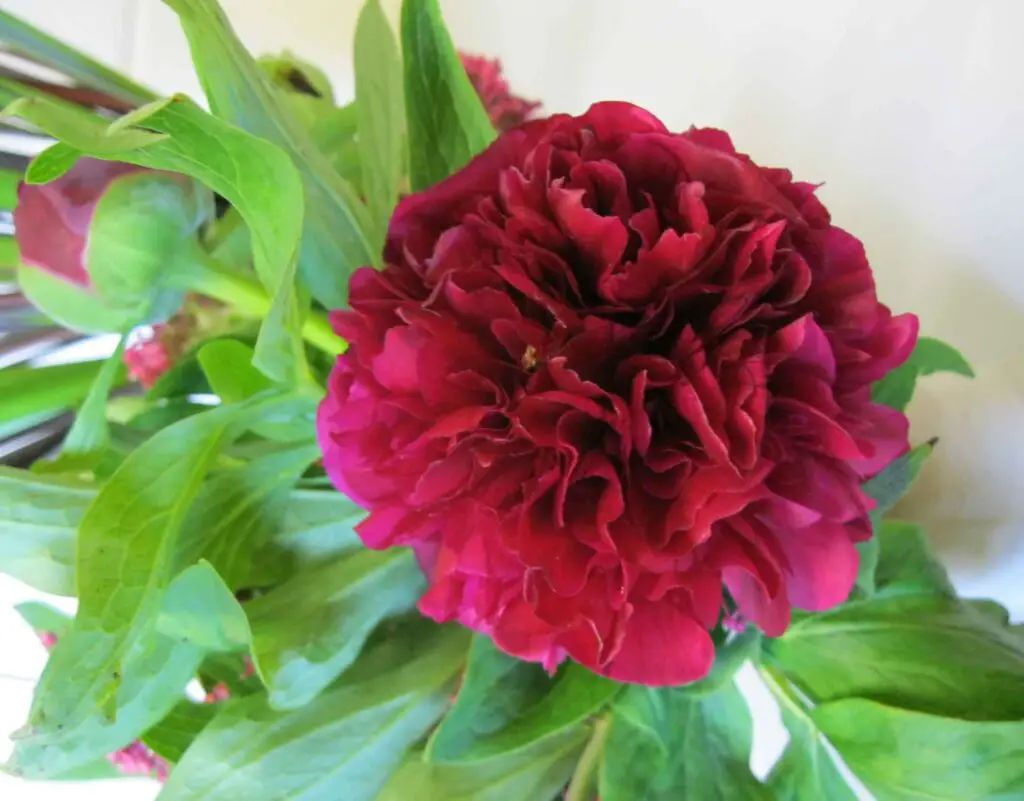
Planting Felix Crousse Peony
Planting Felix Crousse Peony is the first step to enjoying these gorgeous blooms in your garden. With a little planning and care, you can ensure your peonies thrive and bring beauty to your outdoor space for years to come. Here’s a simple guide to get you started.
Ideal Planting Time and Location
The best time to plant Felix Crousse Peonies is in the fall, usually between late September and early November. This gives the plants enough time to establish their roots before winter sets in. However, if you miss the fall planting window, you can also plant them in early spring, as soon as the ground is workable.
Choose a location that gets plenty of sunlight. Peonies need at least 6 hours of direct sunlight each day to produce their best blooms. They also prefer a spot that is sheltered from strong winds, which can damage their delicate flowers.
Soil Preparation and Conditions
Peonies thrive in well-drained, fertile soil. Before planting, it’s important to prepare the soil to give your peonies the best start. Here’s how:
- Test the Soil: Ensure your soil has a pH between 6.5 and 7.0. You can use a soil test kit from a garden center to check this.
- Amend the Soil: If your soil is heavy clay or too sandy, you’ll need to improve it. Add compost or well-rotted manure to enrich the soil and improve drainage.
- Digging the Hole: Dig a hole that is about 18 inches deep and 18 inches wide. This gives enough space for the roots to spread out. Mix some compost or bone meal into the soil at the bottom of the hole to provide nutrients.
Step-by-Step Guide to Planting
- Place the Root: Position the peony root in the hole with the “eyes” (the small, pink or white buds) facing upwards. The eyes should be no more than 2 inches below the soil surface. Planting them too deep can prevent blooming.
- Backfill and Water: Fill the hole with soil, gently firming it around the root. Water the area thoroughly to help settle the soil and eliminate air pockets.
- Mulching: Add a layer of mulch around the base of the plant. This helps retain moisture and keeps weeds at bay. Avoid piling mulch directly against the stems to prevent rot.
Initial Care After Planting
After planting, it’s important to give your Felix Crousse Peony some initial care to help it establish:
- Watering: Keep the soil consistently moist but not waterlogged. Water deeply once a week, especially during dry spells.
- Protection: In colder regions, cover the planting area with a light layer of mulch or straw to protect the young roots from freezing temperatures.
Tips for Success
- Space Them Out: Plant peonies about 3 feet apart to ensure good air circulation. This helps prevent diseases and allows each plant enough room to grow.
- Patience is Key: Peonies can take a couple of years to settle in and start blooming profusely. Don’t be discouraged if you don’t see many flowers in the first year.
Planting Felix Crousse Peonies is a rewarding process that pays off with beautiful, fragrant blooms year after year. With the right location, soil preparation, and care, you’ll set the stage for these stunning flowers to flourish in your garden. Get ready to enjoy the timeless elegance of Felix Crousse Peonies in your own outdoor space!
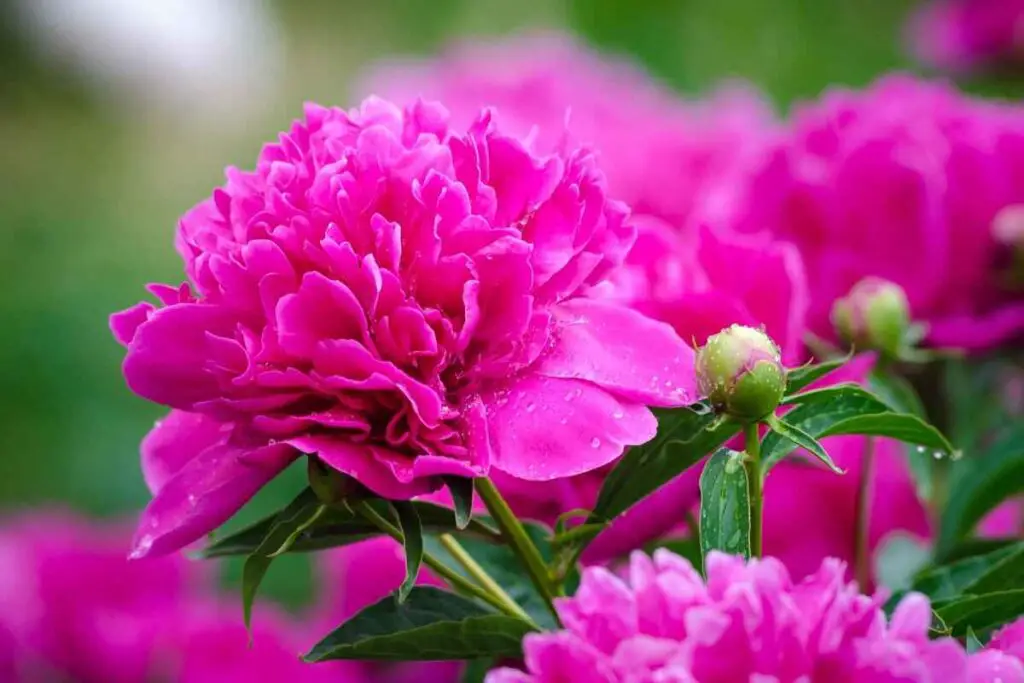
Felix Crousse Peony Plant Care
Caring for your Felix Crousse Peony ensures that these beautiful flowers stay healthy and vibrant, giving you stunning blooms year after year. Here’s a simple guide to help you keep your peonies in top shape.
Watering Requirements
Felix Crousse Peonies need regular watering, especially in the first year after planting. Here’s how to water them properly:
- Consistent Moisture: Keep the soil consistently moist but not soggy. Overwatering can lead to root rot.
- Deep Watering: Water deeply, ensuring that the water reaches the roots. This encourages strong root growth.
- Watering Schedule: During dry spells or hot weather, water your peonies once a week. Make sure to water in the early morning or late afternoon to reduce evaporation.
Fertilization Practices
Feeding your Felix Crousse Peonies with the right nutrients helps them produce more flowers and stay healthy. Here’s what you need to know about fertilizing peonies:
- Timing: Fertilize your peonies in early spring, just as new growth begins. You can also give them a second feeding in late fall.
- Type of Fertilizer: Use a balanced, slow-release fertilizer or a specialized peony fertilizer. Look for one with a balanced ratio of nitrogen, phosphorus, and potassium (such as 10-10-10).
- Application: Sprinkle the fertilizer around the base of the plant, avoiding direct contact with the stems. Lightly work it into the soil with a garden fork.
Pruning and Deadheading Tips
Pruning and deadheading help your Felix Crousse Peonies look their best and promote more blooms. Here’s how to do it:
- Deadheading: After the flowers fade, cut off the spent blooms. This prevents the plant from wasting energy on seed production.
- Pruning: In the fall, after the first frost, cut the stems back to about 2 inches above the ground. This helps prevent disease and prepares the plant for winter.
Pest and Disease Management
Felix Crousse Peonies are relatively resistant to pests and diseases, but it’s still important to keep an eye out for common issues. Here’s how to manage them:
- Aphids: These small insects can cluster on new growth. Use a strong spray of water or insecticidal soap to remove them.
- Botrytis Blight: This fungal disease causes black spots on leaves and stems. Remove affected parts and ensure good air circulation around your plants. Avoid overhead watering.
- Powdery Mildew: This looks like a white powder on the leaves. Prune affected parts and use a fungicide if necessary.
General Care Tips
- Mulching: Apply a layer of mulch around your peonies to retain moisture and keep weeds at bay. Leave some space around the stems to prevent rot.
- Support Stems: Use plant supports or stakes to keep the heavy blooms from toppling over. This is especially important during windy or rainy weather.
- Winter Care: In colder climates, cover the base of the plant with a layer of mulch or straw to protect it from freezing temperatures.
Enjoying the Blooms
With proper care, your Felix Crousse Peonies will reward you with stunning, fragrant flowers. Here are some additional tips to make the most of your peonies:
- Cutting Flowers: To enjoy peonies indoors, cut the flowers in the morning when they are just starting to open. Place them in a vase with fresh water and change the water every few days.
- Extending Bloom Time: Plant peonies with different blooming times to enjoy flowers throughout the growing season.
Caring for Felix Crousse Peonies is straightforward and highly rewarding. By following these simple steps, you’ll ensure that your peonies remain healthy and continue to bring beauty and joy to your garden for many years. Enjoy the process and the stunning blooms that follow!
Complete Guide to Growing and Caring for Bartzella Peonies: Tips and Benefits
Growing Felix Crousse Peony
Growing Felix Crousse Peony can be a delightful and rewarding experience. With their vibrant blooms and pleasant fragrance, these peonies add charm to any garden. Here’s a simple guide to help you grow your Felix Crousse Peonies successfully.
Growth Stages and What to Expect
Felix Crousse Peonies go through several stages of growth each year. Here’s what you can expect:
- Early Spring: New shoots emerge from the ground. They are often red or purple at first.
- Late Spring: Buds begin to form and grow larger. This is an exciting time as you anticipate the beautiful blooms.
- Early Summer: The peonies bloom, showing off their large, double flowers. This is the peak time for enjoying their beauty and fragrance.
- Late Summer: After the blooms fade, the plant focuses on storing energy for the next year. The foliage remains green and lush.
- Fall: The leaves start to yellow and die back. This is the time to prepare the plant for winter.
Tips for Maximizing Blooms
To get the most flowers from your Felix Crousse Peonies, follow these tips:
- Sunlight: Ensure your peonies get at least 6 hours of direct sunlight each day. More sun often means more blooms.
- Watering: Keep the soil moist but not waterlogged. Deep watering helps the roots grow strong.
- Fertilizing: Feed your peonies in early spring with a balanced fertilizer to encourage healthy growth and abundant blooms.
- Spacing: Plant peonies about 3 feet apart to allow good air circulation. This helps prevent diseases and promotes more blooms.
Common Growing Challenges and Solutions
Even with the best care, you might face some challenges when growing Felix Crousse Peonies. Here are common issues and how to solve them:
- Poor Blooming: If your peonies aren’t blooming well, they might be planted too deep. Ensure the “eyes” (buds) are no more than 2 inches below the soil surface. Also, check that they are getting enough sunlight and not too much nitrogen, which can cause more leaves but fewer flowers.
- Yellowing Leaves: This can be a sign of overwatering or poor drainage. Ensure the soil is well-draining and reduce watering if necessary.
- Pests: Aphids and ants are common pests. Spray with a strong jet of water to remove aphids. Ants don’t harm the plants but can be a nuisance. Use ant bait or diatomaceous earth around the base of the plants to deter them.
- Disease: Fungal diseases like botrytis blight can affect peonies. Remove and destroy affected plant parts, and ensure good air circulation by spacing plants properly and avoiding overhead watering.
General Growing Tips
- Mulching: Apply mulch around the base of the plants to retain moisture, regulate soil temperature, and prevent weeds. Keep mulch away from the stems to avoid rot.
- Staking: Use plant supports or stakes to hold up the heavy blooms, especially in windy or rainy conditions.
- Deadheading: Remove spent flowers to encourage more blooms and prevent the plant from wasting energy on seed production.
Enjoying Your Peonies
Felix Crousse Peonies are not only beautiful in the garden but also make excellent cut flowers. Here’s how to enjoy them indoors:
- Cutting Flowers: Cut peonies in the morning when the buds are just starting to open. Use sharp, clean scissors or pruners to make a clean cut.
- Vase Life: Place the cut flowers in a vase with fresh water. Change the water every few days to keep the flowers fresh longer.
Patience Pays Off
Growing Felix Crousse Peonies requires patience. It can take a few years for the plants to become fully established and produce their best blooms. Don’t be discouraged if they don’t bloom much in the first year or two. With proper care, they will reward you with spectacular flowers for many years to come.
By following these tips and caring for your Felix Crousse Peonies, you’ll create a beautiful garden filled with these stunning, fragrant blooms. Enjoy the process and the wonderful results that come with growing these lovely flowers!
Complete Guide to Sedum Plants: Care, Growing Tips, Varieties, and Benefits
Felix Crousse Peony Flowers
The Felix Crousse Peony is a showstopper in any garden, known for its large, lush blooms and delightful fragrance. Here’s everything you need to know about the flowers themselves and how to make the most of their beauty.
Detailed Description of Felix Crousse Peony Flowers
Felix Crousse Peony flowers are a gardener’s dream. These blooms are large, often reaching up to 6 inches in diameter. They are full and double, meaning they have many layers of petals that create a lush, rounded appearance. The color is a rich, deep pink that sometimes borders on red, making them stand out brilliantly against green foliage.
Each flower is packed with soft petals that give it a luxurious, almost velvety look. The center of the flower is often a lighter shade, adding depth and dimension to the overall appearance.
Fragrance
One of the best things about Felix Crousse Peony flowers is their sweet fragrance. The scent is light but noticeable, often described as a mix of rose and lemon. It’s a refreshing aroma that can fill the garden, especially on warm, sunny days. The fragrance is most pronounced in the early morning and late afternoon, making these the best times to enjoy their scent.
Seasonal Blooming Patterns
Felix Crousse Peonies typically bloom in late spring to early summer. The exact timing can vary depending on your climate and local weather conditions. The blooming period usually lasts for about 7 to 10 days, but with good care, you can extend the enjoyment of these flowers.
To have a longer blooming season, consider planting different varieties of peonies that bloom at slightly different times. This way, as one variety finishes blooming, another will start, providing continuous color and fragrance in your garden.
Tips for Cutting and Arranging Felix Crousse Peony Flowers
Peonies make excellent cut flowers for indoor arrangements. Here’s how to enjoy them indoors:
- Best Time to Cut: Cut the flowers in the morning when the buds are just beginning to open. This ensures they last longer in the vase.
- Cutting Technique: Use sharp, clean scissors or pruners to make a clean cut. Cut the stem at an angle to increase the surface area for water absorption.
- Conditioning the Flowers: Remove any leaves that would be below the waterline in your vase. This prevents them from rotting and keeps the water clean.
- Arranging: Place the peonies in a clean vase filled with fresh, cool water. Change the water every two days to keep the flowers fresh. Add a little floral preservative to the water if you have it.
- Display Location: Keep the vase out of direct sunlight and away from heat sources. A cool room will help the flowers last longer.
Enjoying the Blooms Outdoors
In the garden, Felix Crousse Peony flowers can be the focal point of your landscape. Here are some tips to showcase them:
- Group Planting: Plant peonies in groups of three or five for a stunning display. This helps create a fuller, more impactful look.
- Companion Plants: Pair peonies with other perennials like irises, daylilies, or delphiniums. Their different bloom times and colors can complement each other well.
- Garden Design: Use peonies as a backdrop in flower beds or borders. Their height and fullness make them excellent for adding depth to your garden design.
Final Thoughts
The Felix Crousse Peony is more than just a flower; it’s a statement piece in any garden. With their rich color, luxurious petals, and delightful fragrance, these flowers are sure to bring joy and beauty to your outdoor space. By following these tips, you can enjoy the stunning blooms of Felix Crousse Peonies both in the garden and indoors, making the most of their beauty and charm.
Comprehensive Guide to the Chinese Emperor Jasmine Plant
Is Felix Crousse Peony Toxic for Children and Pets?
When adding new plants to your garden, it’s important to consider the safety of your family and pets. Felix Crousse Peony is a beautiful addition to any garden, but is it safe for children and pets? Here’s what you need to know.
Toxicity to Children
Felix Crousse Peonies are generally considered to be mildly toxic to humans. Here’s a detailed look:
- Mildly Toxic: The plant contains compounds called paeonol and paeoniflorin, which can cause mild symptoms if ingested in large quantities.
- Possible Symptoms: If a child ingests parts of the peony, they might experience symptoms like nausea, vomiting, or diarrhea. These symptoms are usually mild and not life-threatening.
- Prevention: To keep children safe, teach them not to eat any plants or flowers from the garden. Supervise young children while they’re playing outside, and consider placing peonies in areas that are less accessible to curious hands.
Toxicity to Pets
Pets, especially dogs and cats, are naturally curious and might nibble on plants in the garden. Here’s what you need to know about the toxicity of Felix Crousse Peonies to pets:
- Mildly Toxic to Pets: Like with humans, peonies are considered mildly toxic to pets. If ingested, they can cause gastrointestinal upset.
- Possible Symptoms: If a dog or cat eats parts of the peony, they might show signs such as vomiting, drooling, or diarrhea. These symptoms are usually mild but can be uncomfortable for your pet.
- Prevention: To protect your pets, keep an eye on them while they’re in the garden. If your pet shows an interest in eating plants, consider using barriers or fences to keep them away from the peonies. Additionally, you can train pets to avoid certain areas of the garden.
What to Do If Ingested
If you suspect that a child or pet has ingested part of a Felix Crousse Peony, here are some steps to take:
- For Children: Rinse their mouth with water to remove any plant material. Offer them a small amount of water to drink. Monitor them for any symptoms. If symptoms occur, contact a healthcare provider or the Poison Control Center for advice.
- For Pets: Remove any remaining plant material from their mouth. Offer fresh water to help flush out the toxins. Keep an eye on them for any signs of distress. If symptoms develop, contact your veterinarian for guidance.
Safe Gardening Practices
To ensure your garden is a safe place for everyone, follow these simple tips:
- Education: Educate your family about the plants in your garden and their potential risks. Knowledge is the best prevention.
- Supervision: Keep an eye on children and pets while they’re in the garden, especially if they’re prone to putting things in their mouths.
- Barrier Methods: Use garden fences, plant cages, or other barriers to restrict access to certain plants, including peonies.
- Pet-Friendly Plants: Consider planting a mix of safe, non-toxic plants in areas where your pets and children frequently play. Some safe options include marigolds, sunflowers, and snapdragons.
Conclusion
While Felix Crousse Peonies are mildly toxic if ingested, they generally pose a low risk to children and pets. By following a few simple precautions and keeping a watchful eye, you can enjoy the beauty of these stunning flowers without worry. Educating your family and creating safe garden practices ensures that everyone can appreciate the garden safely and happily. Enjoy your beautiful Felix Crousse Peonies with peace of mind, knowing that a little care goes a long way in keeping everyone safe.
3 Best Types of Jasmine Plants to Grow Indoors – Easy Care Tips and Benefits
Conclusion: The Beauty and Care of Felix Crousse Peony
The Felix Crousse Peony is a true gem in the gardening world. Its vibrant blooms, rich fragrance, and elegant appearance make it a favorite among garden enthusiasts. Here’s a recap of what makes this peony special and how you can care for it to enjoy its beauty year after year.
Highlights of Felix Crousse Peony
Felix Crousse Peonies are known for their:
- Stunning Blooms: Large, double flowers with layers of rich, deep pink petals that sometimes verge on red. Each bloom can reach up to 6 inches in diameter.
- Fragrance: A delightful scent that combines notes of rose and lemon, filling your garden with a pleasant aroma.
- Longevity: These perennials come back year after year, often producing more blooms as they mature.
Planting and Growing
Starting with the right planting techniques sets the stage for success. Remember to:
- Plant in the Fall: This allows the roots to establish before winter. Early spring planting is also possible if the fall window is missed.
- Choose the Right Location: Full sun and well-drained, fertile soil are key. Peonies need at least 6 hours of sunlight each day.
- Prepare the Soil: Enrich the soil with compost and ensure it is well-draining to prevent root rot.
Care and Maintenance
Once planted, Felix Crousse Peonies require minimal care but benefit from:
- Regular Watering: Keep the soil consistently moist, especially during dry spells. Water deeply to encourage strong roots.
- Fertilization: Apply a balanced fertilizer in early spring and late fall to support healthy growth and abundant blooms.
- Pruning: Remove spent flowers and cut back the stems in the fall to prevent disease and prepare the plant for winter.
Dealing with Challenges
While peonies are relatively hardy, it’s important to:
- Monitor for Pests: Watch for aphids and other pests. Use a strong spray of water or insecticidal soap to control them.
- Manage Diseases: Ensure good air circulation and avoid overhead watering to prevent fungal diseases. Remove and destroy affected plant parts promptly.
Enjoying Felix Crousse Peony Flowers
Whether in the garden or as cut flowers indoors, these peonies are a joy to behold. Tips for enjoying them include:
- Cutting for Arrangements: Harvest blooms in the morning when they are just beginning to open. Place them in fresh water and change the water every few days.
- Displaying Outdoors: Plant in groups or pair with other perennials to create a stunning garden display. Use supports to keep the heavy blooms from toppling over.
Safety Considerations
While Felix Crousse Peonies are mildly toxic if ingested, simple precautions can keep children and pets safe:
- Educate and Supervise: Teach children not to eat garden plants and keep an eye on pets.
- Create Barriers: Use fences or other barriers to keep curious hands and paws away from the plants.
Final Thoughts
The Felix Crousse Peony is a beautiful addition to any garden. With its vibrant blooms and sweet fragrance, it offers visual and sensory delight. By following the simple planting, care, and safety tips outlined in this guide, you can enjoy the timeless elegance of these peonies year after year. Embrace the joy of gardening and the rewards it brings with the stunning Felix Crousse Peony as a centerpiece in your landscape.
Grow Butterfly Weed: A Complete Guide to Planting, Caring, and Benefits
Frequently Asked Questions about Felix Crousse Peony
When it comes to Felix Crousse Peony, gardeners often have several questions. Here, we’ve compiled some of the most frequently asked questions and provided straightforward, easy-to-understand answers to help you grow and enjoy these beautiful flowers.
1. When is the Best Time to Plant Felix Crousse Peonies?
Fall is the best time to plant Felix Crousse Peonies. This allows the roots to be established before winter. However, if you miss the fall window, you can plant them in early spring. Planting in these periods gives your peonies the best chance to thrive and bloom.
2. How Deep Should I Plant Felix Crousse Peonies?
When planting, place the roots so the “eyes” (the buds where new growth emerges) are about 1 to 2 inches below the soil surface. Planting them too deep can result in fewer blooms. Make sure the soil is well-draining to prevent waterlogging.
3. How Much Sunlight Do Felix Crousse Peonies Need?
Felix Crousse Peonies need at least 6 hours of direct sunlight each day. They thrive in full sun but can tolerate partial shade. More sunlight generally means more and better blooms, so choose a sunny spot for planting.
4. What Type of Soil is Best for Felix Crousse Peonies?
Peonies prefer well-drained, fertile soil. Loamy soil enriched with compost is ideal. Avoid heavy clay or overly sandy soils. If your garden soil is heavy, consider amending it with organic matter to improve drainage and fertility.
5. How Often Should I Water Felix Crousse Peonies?
Water newly planted peonies regularly to keep the soil consistently moist, but not soggy. Once established, water them deeply about once a week, especially during dry spells. Deep watering encourages strong root growth and healthier plants.
6. How Can I Encourage More Blooms?
To get the most blooms from your Felix Crousse Peonies:
- Ensure Proper Sunlight: Make sure they receive at least 6 hours of sunlight.
- Fertilize Appropriately: Use a balanced fertilizer in early spring and late fall.
- Prune and Deadhead: Remove spent flowers and cut back stems in the fall to promote better growth and blooms next season.
- Space Properly: Ensure good air circulation by spacing plants about 3 feet apart.
7. What Should I Do if My Peonies Aren’t Blooming?
If your peonies aren’t blooming:
- Check Planting Depth: Ensure the eyes are not planted too deep (no more than 2 inches below the soil surface).
- Assess Sunlight: Make sure they are getting enough sunlight.
- Evaluate Soil and Watering: Check for overwatering or poor drainage, and improve soil conditions if necessary.
- Consider Age: Peonies can take a few years to become fully established and bloom profusely.
8. Are Felix Crousse Peonies Toxic to Children and Pets?
Felix Crousse Peonies are mildly toxic if ingested. They can cause mild symptoms like nausea, vomiting, or diarrhea. To keep children and pets safe, teach them not to eat garden plants and supervise their outdoor activities.
9. How Do I Prepare Felix Crousse Peonies for Winter?
In the fall, after the first frost, cut back the stems to about 2 inches above the ground. Apply a layer of mulch around the base of the plants to protect them from freezing temperatures. This helps prevent disease and prepares the plants for winter dormancy.
10. Can I Grow Felix Crousse Peonies in Containers?
Yes, you can grow Felix Crousse Peonies in containers, but choose a large pot with good drainage. Use high-quality potting soil and ensure the container is placed in a sunny spot. Water regularly and provide winter protection as container plants are more susceptible to cold damage.
Final Thoughts
Growing Felix Crousse Peonies can be a rewarding experience with their stunning blooms and delightful fragrance. By understanding their needs and addressing common questions, you can enjoy these beautiful flowers in your garden year after year. Happy gardening!

